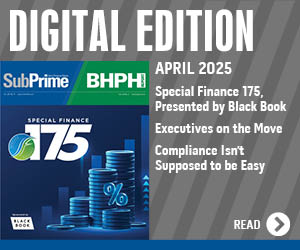Balancing the risk versus rewards of financing to millennials

Millennials — those individuals born between 1980 and 1994 — currently represent 25 percent of the total buying power in the U.S., according to a recent study by TransUnion. They also control a large chunk of liquid assets, an amount that is forecast to grow to $7 trillion by 2020. By 2025, they are expected to generate 46 percent of all U.S. income.
While this generation’s buying power is increasing, they have much different challenges than previous generations, especially when it comes to student debt. Outstanding student loan debt stands at $1.31 trillion. Millennials also earn less than previous generations. The average worker in the 24-36 age group earns $10,000 less than their parents' generation did at the same age, which is roughly 20-percent less purchasing power.
In the retail automotive space, 20 percent more millennials are open auto loans and leases than Generation X, and they are on track to outpace Baby Boomers by 2020. According to the TransUnion research, the growth opportunity is clear.
So, how can auto finance companies capture more of this growing — yet challenging — demographic? If lenders are going to bring these millennials into the fold, they’re going to have to meet them halfway.
Balancing risk versus reward
Increased debt means more risk for the finance company. According to TransUnion, there are more non-prime millennials (59 percent) than Gen X (54 percent), representing a larger risk. However, millennials are opening auto loans and leases at a rate 2 percent to 3 percent higher than Gen X. So, how do you balance the risk versus reward?
One strategic way of appealing to this generation while also protecting your auto loan portfolio from risk is to structure your auto loans with complimentary F&I products, like a vehicle service contract (VSC) or vehicle return protection. These products protect consumers from unforeseen circumstances that can negatively affect their ability to make their car or house payments.
For example, a VSC gives consumers more control over their monthly budget by taking care of unexpected expenses related to a vehicle breakdown. Meanwhile, Vehicle Return protection offers consumers a safety net to relieve their lease or loan obligation when unforeseen life events occur, like:
• Involuntary unemployment
• Physical or mental disability
• Critical illness
Beyond reducing risk, offering consumer protection products on your contracts allows you more control on compliant product pricing and gives you a driving differentiator with your dealership clients as they work to increase their relevance with millennials.
Meeting them halfway
This is the first completely digital generation, living almost entirely on their smartphones. According to First Data, many millennials would never think of entering a bank branch to take care of their financial needs. More than a fifth of all millennials have never even written a physical check to pay a bill.
This generation also came of age during the Great Recession and it impacted their view of credit and risk. According to TransUnion, millennials prefer to use a debit card as their primary means of payment. If they use a credit card, they carry much lower balances than their counterparts in Gen X. As stated earlier, Millennials do use credit in order to meet their transportation goals.
How can you capture this lucrative market? These five tips can help.
• Be accessible in real-time all the time. Realize that Millennials are researching their vehicle purchases online — independent of dealer input. Make sure you have financing calculators easily accessible. Better yet — consider live online chat functions.
• Communicate on their terms. Millennials rely on their smartphones. Use text, Twitter or email to reach them.
• Demonstrate innovation. Relying on brick and mortar to capture the Millennial will miss the mark. Not ready to put everything online? Demonstrate a willingness to interact digitally and you’ll empower your future customer.
• Be a partner. Often this is the millennial’s first car purchase — and it can be a scary proposition. Work with them to find a solution that is mutually satisfactory. Offer — and explain — consumer protection products that will insulate your portfolio and keep them on the road.
• Embrace change. Face it. Successfully working with this generation will require change on the lender’s part. Their size and buying power make it unavoidable. But the more successful you are embracing that change will translate into greater Millennial market share. In addition, auto dealers will want to work with you because your business will be structured to handle their increased millennial traffic.
And, while you are embracing change to meet your millennial customer halfway, understand that Generation Z is close behind. Balancing the risk versus reward of appealing to millennials isn’t rocket science. It simply takes thinking of solutions outside of the traditional lending box.
Brien Joyce is the vice president of specialty channels at EFG Companies. For more details, contact EFG Companies at (800) 527-1984 or through this page.


